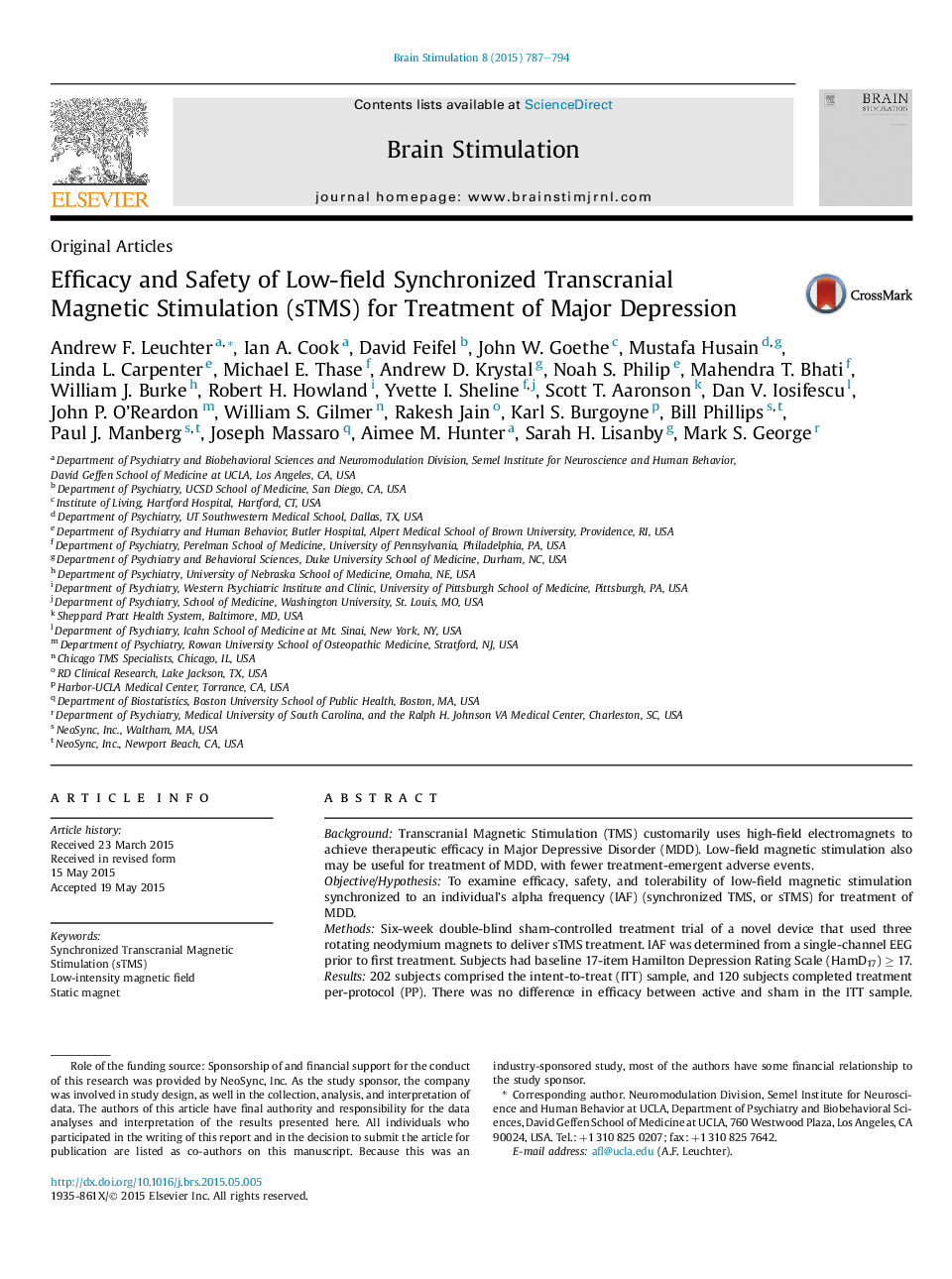| کد مقاله | کد نشریه | سال انتشار | مقاله انگلیسی | نسخه تمام متن |
|---|---|---|---|---|
| 6005254 | 1184661 | 2015 | 8 صفحه PDF | دانلود رایگان |

- We report on a novel form of brain stimulation, Synchronized Transcranial Magnetic Stimulation (sTMS).
- sTMS delivers brain stimulation at the individual alpha frequency (IAF) determined from EEG.
- sTMS uses permanent rotating magnets to impart low-field sinusoidal waveform brain stimulation.
- We examined efficacy of sTMS for treatment of Major Depressive Disorder (MDD).
- In the per-protocol study population, sTMS was significantly more effective than sham treatment in ameliorating symptoms of MDD.
BackgroundTranscranial Magnetic Stimulation (TMS) customarily uses high-field electromagnets to achieve therapeutic efficacy in Major Depressive Disorder (MDD). Low-field magnetic stimulation also may be useful for treatment of MDD, with fewer treatment-emergent adverse events.Objective/HypothesisTo examine efficacy, safety, and tolerability of low-field magnetic stimulation synchronized to an individual's alpha frequency (IAF) (synchronized TMS, or sTMS) for treatment of MDD.MethodsSix-week double-blind sham-controlled treatment trial of a novel device that used three rotating neodymium magnets to deliver sTMS treatment. IAF was determined from a single-channel EEG prior to first treatment. Subjects had baseline 17-item Hamilton Depression Rating Scale (HamD17) â¥Â 17.Results202 subjects comprised the intent-to-treat (ITT) sample, and 120 subjects completed treatment per-protocol (PP). There was no difference in efficacy between active and sham in the ITT sample. Subjects in the PP sample (N = 59), however, had significantly greater mean decrease in HamD17 than sham (N = 60) (â9.00 vs. â6.56, P = 0.033). PP subjects with a history of poor response or intolerance to medication showed greater improvement with sTMS than did treatment-naïve subjects (â8.58 vs. â4.25, P = 0.017). Efficacy in the PP sample reflects exclusion of subjects who received fewer than 80% of scheduled treatments or were inadvertently treated at the incorrect IAF; these subgroups failed to separate from sham. There was no difference in adverse events between sTMS and sham, and no serious adverse events attributable to sTMS.ConclusionsResults suggest that sTMS may be effective, safe, and well tolerated for treating MDD when administered as intended.
Journal: Brain Stimulation - Volume 8, Issue 4, JulyâAugust 2015, Pages 787-794